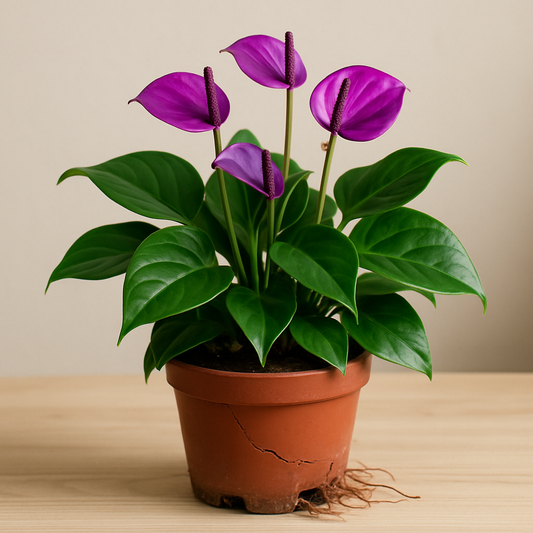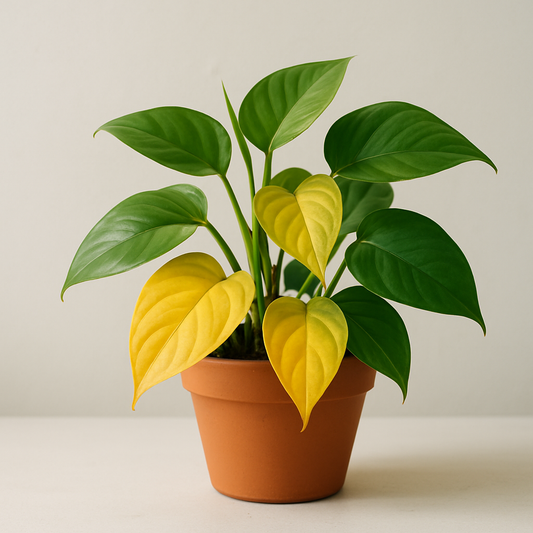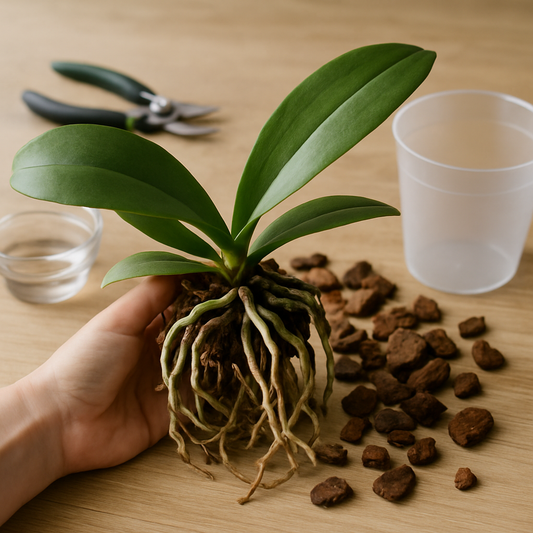Welcome to the complete care guide for the Calathea 'Vittata', your new go-to source for all things related to this striking indoor plant. Whether you're a seasoned plant enthusiast or a beginner looking to add some vibrancy to your space, the Calathea 'Vittata', also known as the Peacock Plant or Zebra Plant, is a beautiful choice for any home. This detailed guide will walk you through every step of caring for your plant, ensuring it thrives and becomes a stunning centerpiece.
Watering
Calathea 'Vittata' thrives with consistent moisture. Water your plant every 5-7 days, ensuring the soil remains moderately moist but never soggy. Use filtered or distilled water to prevent brown leaf tips, as this plant is sensitive to chlorine and fluoride commonly found in tap water. When watering, allow the top inch of soil to dry out slightly between watering sessions to avoid root rot.
Soil
This plant prefers well-draining potting soil rich in organic matter. A mix of peat moss, perlite, and orchid bark creates an ideal environment, providing the necessary aeration and moisture retention. Ensure your pot has drainage holes to prevent water accumulation at the base, which can harm the roots.
Light Requirements
Calathea 'Vittata' favors bright, indirect light. Direct sunlight can scorch the leaves, leading to unsightly brown patches. Position it near a north or east-facing window where it can benefit from filtered light. Artificial lighting, such as fluorescent bulbs, can also support its growth in poorly lit spaces.
Temperature and Humidity
Maintain a temperature range of 65°F to 80°F (18°C to 27°C). This tropical plant thrives in high humidity levels of 50% or more. Consider placing a humidifier nearby or use a pebble tray filled with water to increase ambient humidity. Ensure your Calathea is not placed near drafts or heat vents, as these can cause leaf curling or browning.
Feeding and Fertilizing
Fertilize monthly during the growing season (spring and summer) with a balanced liquid houseplant fertilizer diluted to half strength. This will provide essential nutrients and encourage robust leaf growth. Avoid fertilizing during the fall and winter months as the plant's growth slows.
Pruning and Maintenance
Regularly remove yellow or brown leaves to maintain the plant's appearance and health. Prune at the base of the leaf stem using clean, sharp scissors. This not only improves aesthetics but also encourages new growth and prevents pest attraction.
Common Issues and Solutions
Brown Leaf Tips: Often caused by dry air or tap water. Increase humidity and switch to filtered water.
Leaf Curling: Usually a sign of low humidity or excessive sunlight. Adjust placement and humidity levels accordingly.
Common Pests
Spider mites and aphids can occasionally affect your Calathea. Use insecticidal soap or neem oil as a natural deterrent. Regularly wipe leaves with a damp cloth to remove dust and discourage pests.
Propagation Tips
Propagate your Calathea 'Vittata' by division during repotting in spring. Gently separate the plant into smaller clumps, ensuring each division has healthy roots. Plant in fresh soil and care as usual.
Overwintering
During winter, reduce watering and stop fertilization. Ensure the plant remains in a warm environment with adequate humidity, as cold drafts can be detrimental. Transition gradually to prevent shock.
Transitioning Between Indoor and Outdoor
Calathea 'Vittata' is best kept indoors but can be placed outside in a shaded area during the summer. Transition slowly by exposing it to the outdoor environment for increased periods over a week to prevent shock.
Indoor Care
Focus on maintaining humidity and providing proper indirect lighting. Consider using plant stands or hanging baskets to display your Calathea attractively within your indoor space.
Outdoor Care
When outdoors, shelter your Calathea from direct sunlight and wind exposure. Monitor for fluctuations in temperature and humidity, bringing the plant indoors if conditions become unsuitable.
How to Grow From Seed
Growing Calathea 'Vittata' from seed is challenging and not commonly attempted due to its slow germination rate and specific care requirements. Purchase established plants for best results.
Special Care Tips
Avoid frequent repositioning as this plant can be sensitive to environmental changes. Clean leaves regularly to enhance its ability to photosynthesize effectively.
Design Ideas
Calathea 'Vittata' makes a beautiful statement in shaded corners or as a striking centerpiece on tables. Pair with ferns or pothos for a lush, tropical effect. Use pots with natural textures, like clay or bamboo, to complement its vibrant patterns.
Ready to make the Calathea 'Vittata' the newest member of your plant family? Learn more about the Calathea 'Vittata' and bring its charm to your space today!




